Recently, I had a conversation with Lauren Vieira of the excellent band Dreadnought about using visual words to describe music, and the connotations different colors and words contained. Over the course of the discussion, she mentioned that she had a condition called synesthesia, a condition whereby the senses “mingle” due to irregular neural connections in the brain, leading people with this condition to be able to see sounds, hear colors, taste shapes, and experience all sorts of different combinations of the senses, which differ from synesthete to synesthete. I asked her how it affected her writing process for the band, and she wrote this fantastic guest article on how the way she sees sound has totally changed her creative process.
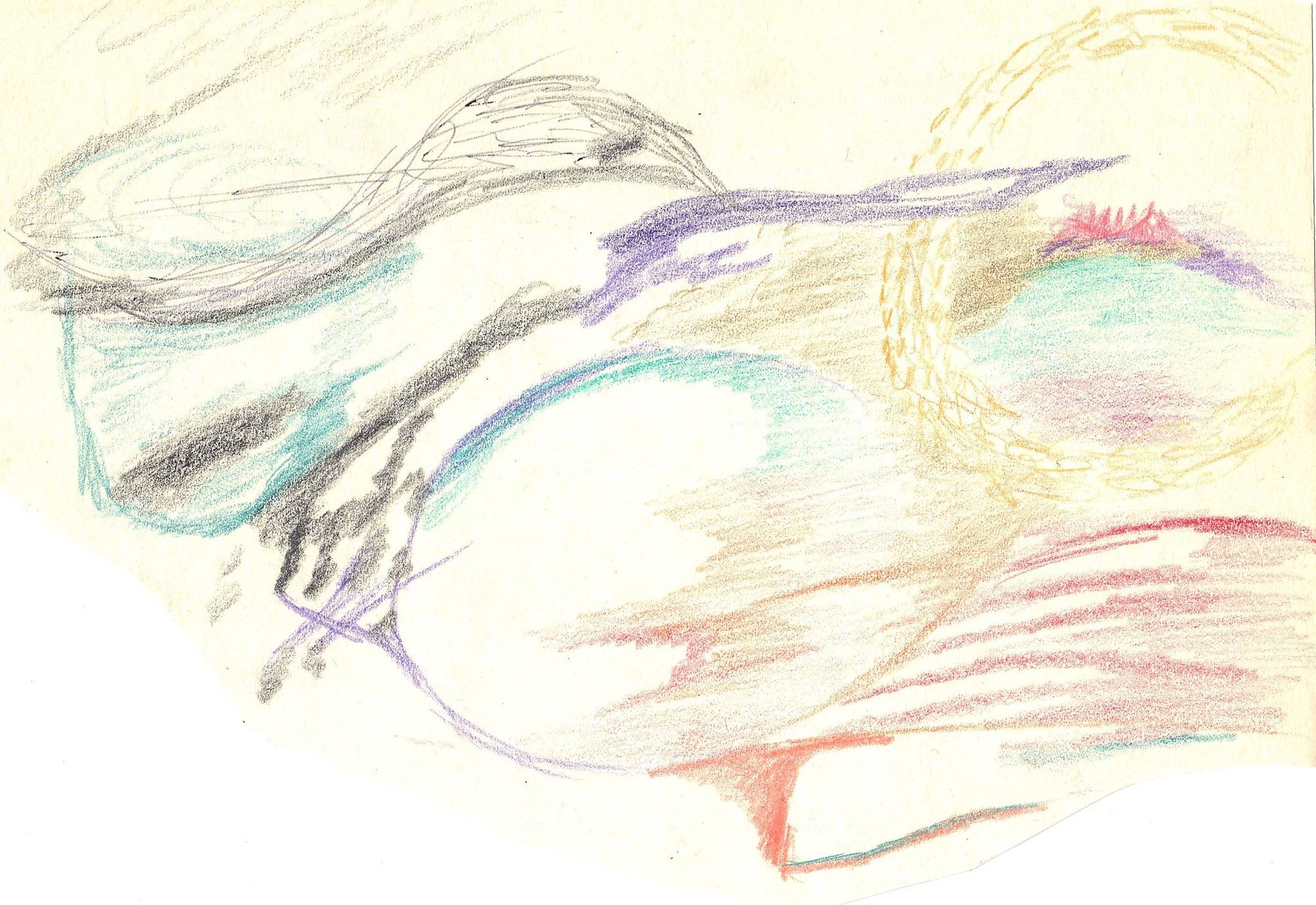
I could restate this question to say, “How does synesthesia make your songwriting process feel both totally fulfilling and terminally incomplete?” Synesthesia dominates my writing style and keeps me buckled into a constant, distracting daydream. For those who have never heard of synesthesia, it is essentially a miswiring of the senses, allowing me to physically see everything I hear (and sometimes taste shapes, if I’m lucky).
For people like me, it can never just be “listening” to music. It’s a scroll across your vision like graffiti on a passing train. It’s like a stamp inside of the eyelids when a car alarm wails or the wind howls against your window. It makes it impossible to be 100% focused on anything, and writing music is a tedious process that requires exactly the right people (which I’m incredibly lucky to have found).
Kelly, Kevin, and Jordan are exceptional musicians and songwriters, and as such, have well-trained ears with regard to mix, structure, balance, and the “weight” that each part of a song carries… things that are harder for me, because I can only really easily gauge the colors, textures, and “pictures” to craft on top of it. If I feel that a part needs to be “smooth,” “jagged,” “sticky,” “shiny,” or “pastel” I only have control over my contribution, and it will take at least 20 or 30 minor tweaks over the course of a year before I can say, “Yeah. This song portrays exactly what I mean to say.”
The songwriting process is unique for me because songs “develop” their color over time, and only then it feels finished. I can’t speak for the rest of the band, but for me, fine-tuning a song, while it means solidifying solos, etc. for normal people, means, “Making the edge of that riff a little shinier,” or maybe, “Softening this jagged peak, here.” Making “this part” a little more turquoise. Every song and idea starts as a haphazard and neutral-colored mess until the shape is right, the song has a distinct color scheme, and I can key into any spot and know exactly which part of the song it represents.
It’ll be more effective to give a sensory tour, so here’s a quick trip into each song on Bridging Realms. A listen to the song paired with these descriptions will help you understand what Dreadnought “looks” like to me, and put my madness into perspective.
This song is a spinning vortex. We’ll call him Squid, and you’ll land right on top of this guy’s mantle (the hump). Squid is 3-dimensional, so you’ll pass through some of the cooler colors on the spectrum as the light disappears and you float through his hollow body. You’ll see dark red veins and neurons firing by the million. Finally you’ll be spit out somewhere around the tentacles right as the song starts to sprinkle some chimes out into the space ocean for you to float on for a while.

Disclaimer: Despite the annotation, this song does not actually remind me of any kind of religious figure. But it sure came out creepy. This song oozed red from the get-go. I did a little research and found out that the color wheel of music theory corresponds to the circle of fifths (supposedly). So it would make sense that a song in C (magenta-ish), and later G (red), would carry a warm theme the whole way through.
I would give credit to science for teaching me that the notes/color pairs vibrate at “closest perceivable frequencies,” as pairs, but really, “Odyssey” just needed a big creepy humanoid at the beginning and a crispy, jagged cliff when the crunchy riffs come in, science be damned.
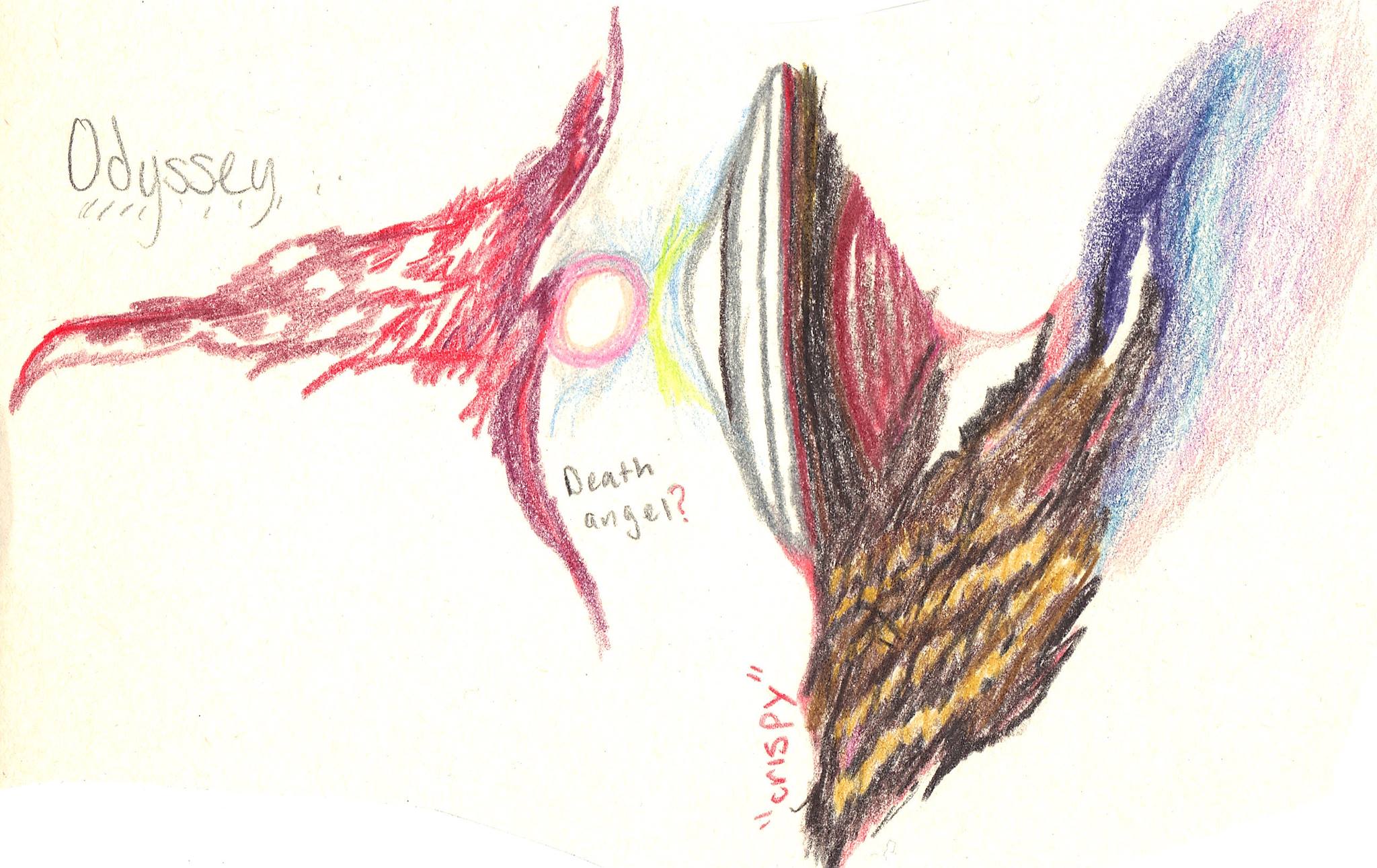
Minuet was the first song we wrote after Lifewoven, and it took me almost two years of adding and trying out different elements before it developed its “color.” I used to give parts of it a kind of “windy” feel with a windy-sounding patch to give it the air of a Van Gogh skyline, but instead it ended up looking like someone poured a thick stout on top of cotton candy. Yuck. Eventually, the piano below Kelly’s flute solo gave me the chunk of cool colors I was looking for amidst the pile of yellows and greens. There’s a disconnectedness with this song that I associate with the “swishiness” and ends up looking kind of stringy (and I suppose, the Van Gogh-esque element I was looking for).
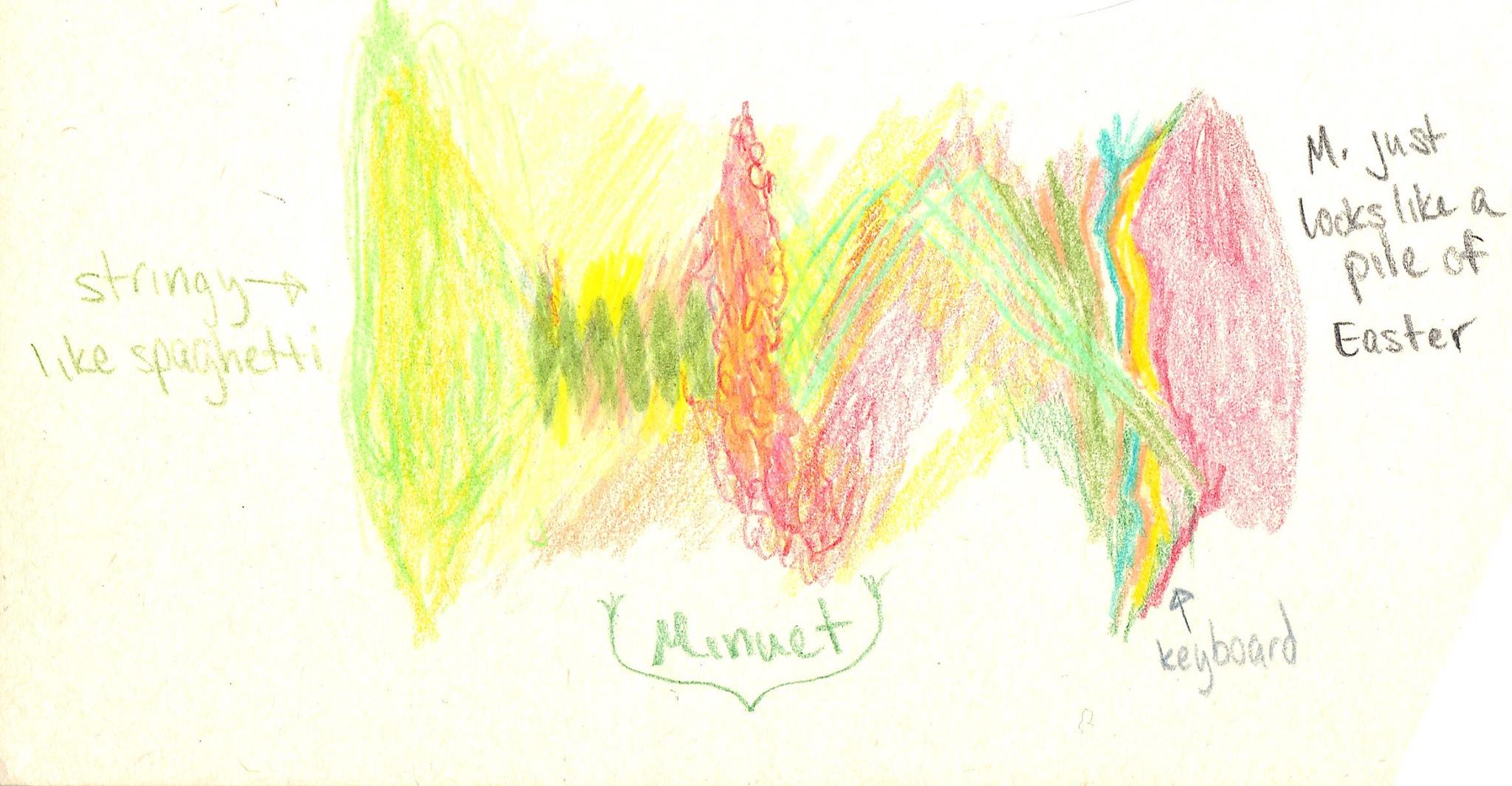
By far my favorite picture, even though it’s one of the hardest to play live. I’d like to eventually paint this one to bring out the crispness of the pillars, and add some “snow” inside the white space for texture. The distribution of space is definitely the defining feature of this song for me, and is the only one of ours that presents itself to me as a “scroll.” It comes in foggy, and then progressively colorful and warm. This song isn’t a bold one. It is definitely the most “fluffy” and it leaves us to fill the white space on our own.
That wing functions as a connector- my Event Horizon. This piece begs to be touched. There is so much space that it is easy to derail. If the Event Horizon Arm was a walkway, it would take us into Pillar #3 as we hear, “It is a lens,” and now we’re standing in its hollow middle, with glass walls in each direction and glass floor beneath our toes (Oh, and you’re naked. Yay!). The glass looks like willow bark the same blue of a pristine mountain lake. It’s glistening down the glass lightly. But then it’s a waterfall, and you’re just watching the rest of the song and its chaos disappear further and further away from you… And you certainly feel something, but you can’t figure out exactly what… So you choose to just not feel anything for a while.
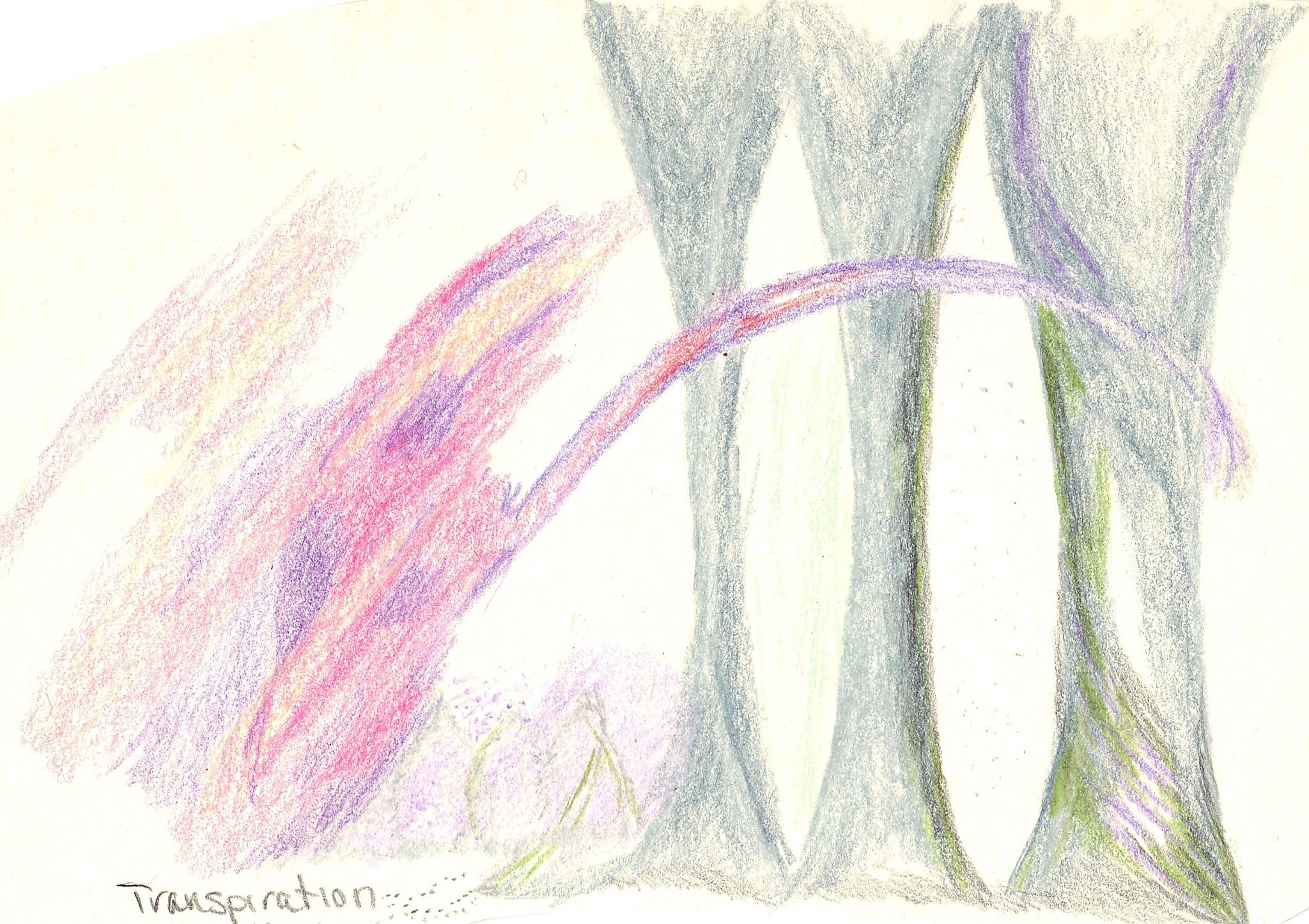
I may owe this song a redo, and will probably give it its own full-sized painting. This song stayed distant to me even all the way into the studio. We finished it only a few weeks before studio time, and practiced/recorded it exactly as well as we hoped….But then I tweaked it for a year. The colors kept changing. The beginning starts off pink, purple, and green. Royal colors. Then spaces out a bit.. It gets very tangled. It’s hard for even me to make sense of.. I tried to section a part off and “tighten” it. It feels tight, when Kelly and I do the dual-screams. But then it cascades again, opens wide, staying dark. The end has been and will be absolutely perfect- but it feels like an end.
It feels like “Bridging Realms” found you sitting complacently by a tree after your trip through “Transpiration,” so “Bridging” has claws, and those fingers penetrate all dimensions. Shakily, like it’s half phoenix, ready to die again at any second. This is the most emotional part of a set for me, and therefore the most chaotic. I feel butterflies in my gut when it’s over, and I hope the audience feels it, too.
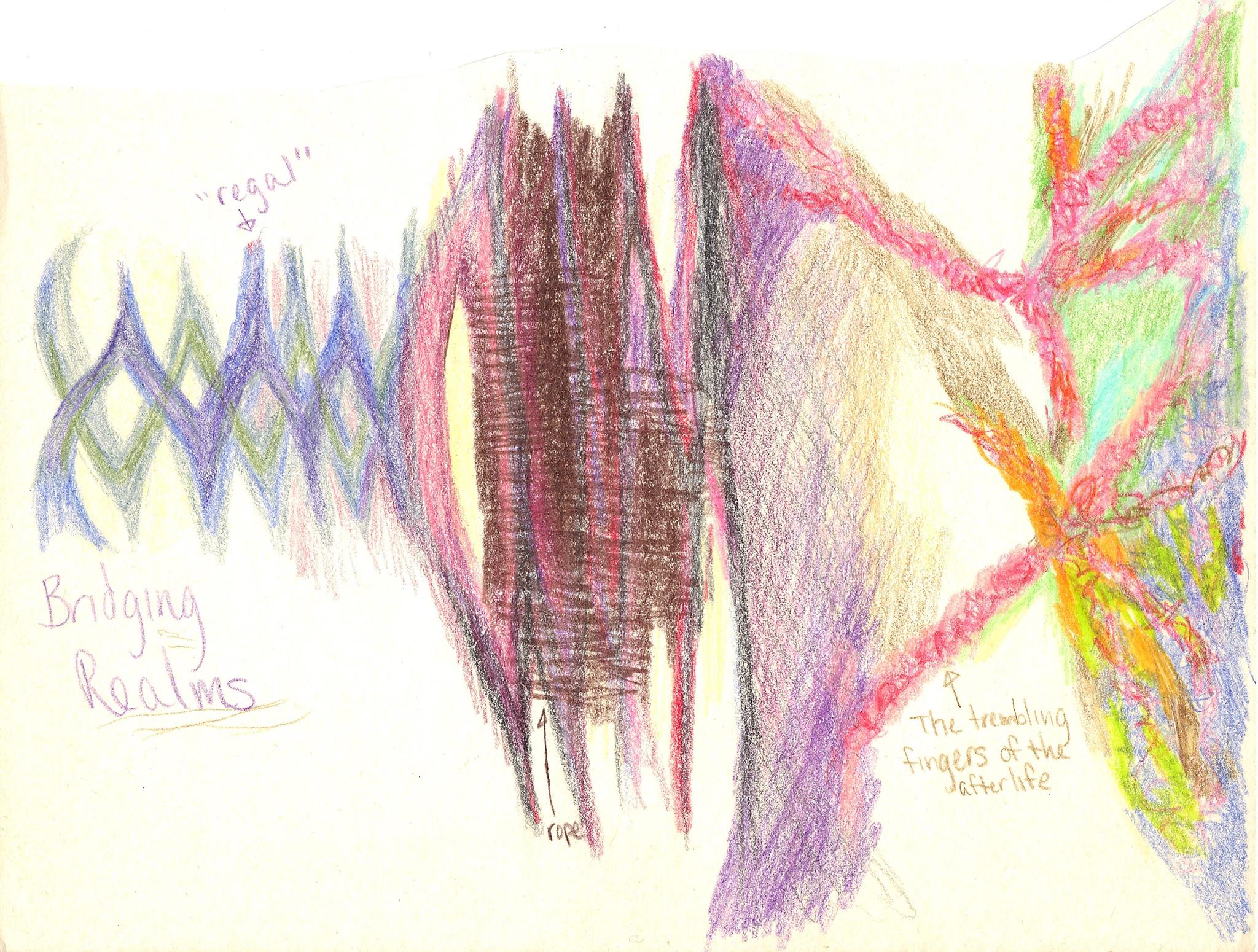
Here ends a visual saga into our most recent brainchild and into ¼ of Dreadnought’s painfully overactive imagination. Huge thanks to Simon and the other babes at Heavy Blog for letting me gab about this stuff, and I hope any other synesthete reading this becomes inspired to show the world what your unique senses are all about, too.
Dreadnought’s music is evocative, unique, and, most importantly, extremely well-written. With Lauren’s explanation, we hope you can go into Bridging Realms and Lifewoven with renewed vigor and a deeper sense of the sheer amount of creativity driving it. If you happen to live in the Southwest US, Dreadnought may be playing in your city soon on their next tour! Check out the dates on their Facebook page and go catch them if you can.